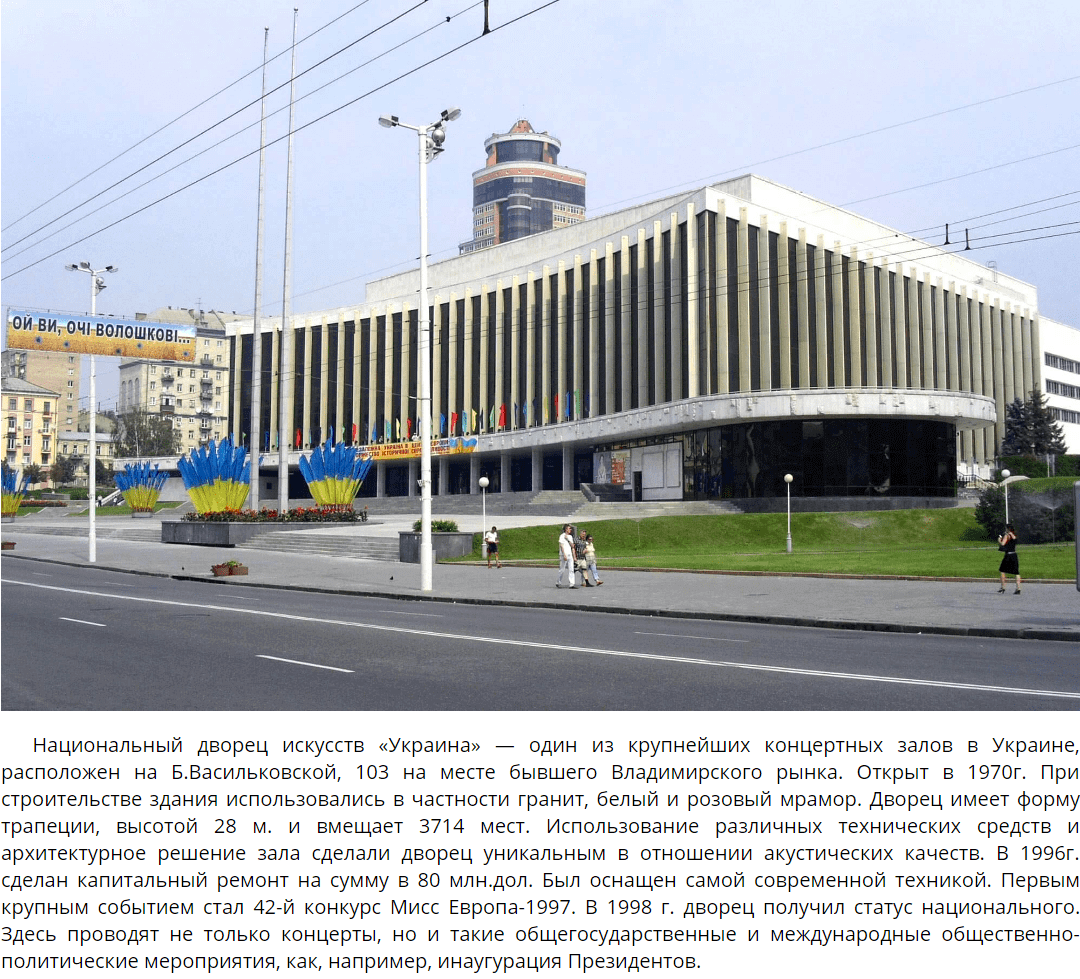Sightseeing tour in Lviv

“Lviv construction at its best, was inspired by the West “
We conduct sightseeing tours around Lviv, where you will get acquainted with the history of the city, as well as see its main attractions – the Town Hall, Market Square, Italian Courtyard, Opera House, etc. It’s a walking sightseeing tour, that runs through the center (all historical sites are within walking distance). In addition, we can enhance the route by such quarters, as Austrian, Polish, Jewish and Armenian. The tour duration is 2-3 hours.
Map of Lviv sightseeing tour
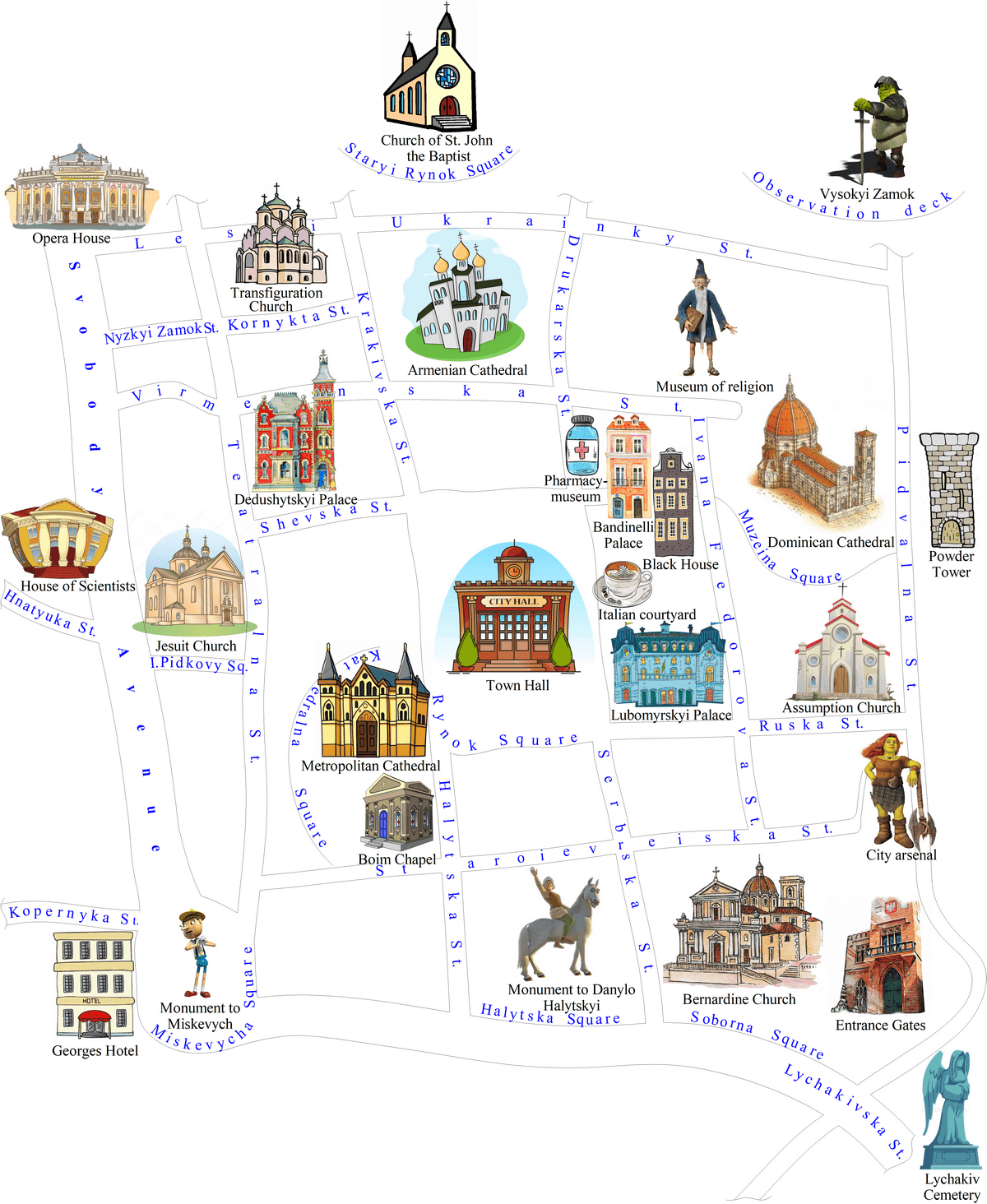
We suggest indulging in the services of our tour guides and booking a sightseeing tour around Lviv. On this page we have drawn a map of the city, indicating the most interesting sights of Lviv.
Lviv is rightfully called a museum city. It should be noted that the historical center of Lviv (Old Town) is a cultural heritage site of Ukraine and is included in the UNESCO World Heritage List. Here, buildings of the XIV-XVIII centuries have survived to this day, which are architectural monuments and are protected by the state. In terms of its urban development, Lviv is a unique example of combining the architectural and artistic traditions of Eastern Europe.
For many centuries, the city has attracted the attention of various states and nationalities, being the epicenter of cultural, commercial and political life. As proof of this, today we see the architectural diversity of Lviv: buildings from the period of the Habsburg Empire, the so-called Austrian Lviv, the oldest Armenian church with its extraordinary paintings, the most beautiful Polish church with rich decoration and other religious buildings included in this list.
Lviv is a tourist city visited by thousands of tourists from all over the world. If you are visiting the City of Leo for the first time, then you should definitely do three things: drink a cup of Lviv coffee, taste local amber beer and, of course, taste Lviv cuisine.
In a few hours of excursion walk you will see all the variety of Lviv. Whichever route you choose, an excursion around Lviv will become an exciting journey for you.






 Hlynianski (Entrance) Gates is a monument of defensive architecture of the 17th century, located in the old part of Lviv (Mytna square). It is the best-preserved fragment of the city’s fortifications and is part of the Bernardine monastery. A gate of stone and brick was erected with a row of loopholes in the upper tier. In the center, there is a tower with an arched passage. In the 1970s, reconstruction was carried out, during which the old moat and wooden galleries were reconstructed. Today the premises are occupied by the Scientific Restoration Institute and the administration of the Historical and Cultural Reserve.
Hlynianski (Entrance) Gates is a monument of defensive architecture of the 17th century, located in the old part of Lviv (Mytna square). It is the best-preserved fragment of the city’s fortifications and is part of the Bernardine monastery. A gate of stone and brick was erected with a row of loopholes in the upper tier. In the center, there is a tower with an arched passage. In the 1970s, reconstruction was carried out, during which the old moat and wooden galleries were reconstructed. Today the premises are occupied by the Scientific Restoration Institute and the administration of the Historical and Cultural Reserve.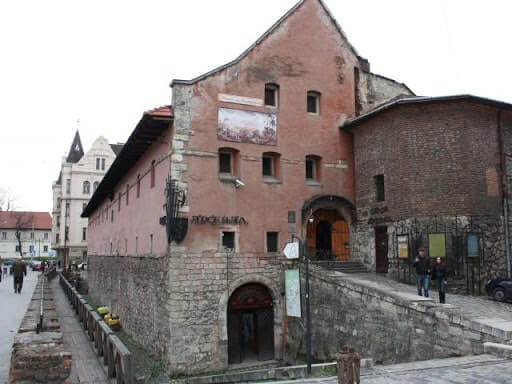 The city arsenal is a fortification (1554-1556), a monument of defense architecture (Podvalna St., 5). It features a stone rectangular two-storey building with a tower. During excavations in the 1970s it turned out that the tower and the walls of the 1st floor are of ancient origin and were presumably erected in the XIV century. Since 1981 to the present day, it houses a museum of weapons. A popular medieval-style restaurant is located on the ground floor.
The city arsenal is a fortification (1554-1556), a monument of defense architecture (Podvalna St., 5). It features a stone rectangular two-storey building with a tower. During excavations in the 1970s it turned out that the tower and the walls of the 1st floor are of ancient origin and were presumably erected in the XIV century. Since 1981 to the present day, it houses a museum of weapons. A popular medieval-style restaurant is located on the ground floor. Vysokyi Zamok – Kniazha Hora or Zamkova Hora, is located in the historical part of Lviv. Here during the XIII-XIX centuries there was a castle founded under the leadership of the Galicia-Volyn prince Lev Danylovych. The building was originally made of wood. Later, by order of the Polish king Casimir III, the castle was rebuilt in stone. By the mid XIX century the structure was dismantled, and a city park was laid out in its place. Only a fragment of the southern wall with loopholes has survived. Since 1869, a memorial mound, the Kopets of the Union of Lublin, has been piled up on the hill. In 1957, a TV tower was installed on the Zamkova Hora. Today the Vysokyi Zamok is a favorite place for the townspeople. At the very top there is an observation deck, whereof a picturesque panorama of Lviv opens.
Vysokyi Zamok – Kniazha Hora or Zamkova Hora, is located in the historical part of Lviv. Here during the XIII-XIX centuries there was a castle founded under the leadership of the Galicia-Volyn prince Lev Danylovych. The building was originally made of wood. Later, by order of the Polish king Casimir III, the castle was rebuilt in stone. By the mid XIX century the structure was dismantled, and a city park was laid out in its place. Only a fragment of the southern wall with loopholes has survived. Since 1869, a memorial mound, the Kopets of the Union of Lublin, has been piled up on the hill. In 1957, a TV tower was installed on the Zamkova Hora. Today the Vysokyi Zamok is a favorite place for the townspeople. At the very top there is an observation deck, whereof a picturesque panorama of Lviv opens.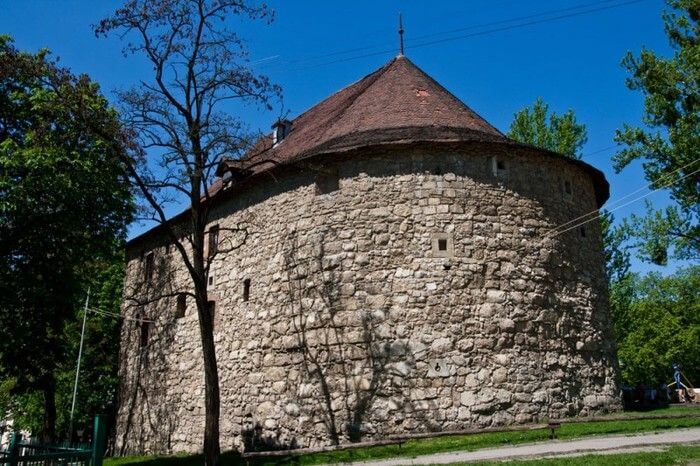 The Powder Tower is a monument of fortification construction of 1554-1556 (Podvalna st., 4). It is the only surviving defensive tower that was part of the Lviv fortification system. It is three-storey, built of rough stone and covered with a peaked roof. Its walls thickness is up to 3 m. The facade wall is cut with loopholes. During the peace period it served as a storage facility. The tower stands on earthen ramparts, on where in the 19th century the city park was laid out. At the entrance to the building, there are sculptures of sleeping lions (19th century). In Soviet times, the plaster was removed from the walls of the tower, and the primary masonry was revealed. Today it houses the House of the Architect.
The Powder Tower is a monument of fortification construction of 1554-1556 (Podvalna st., 4). It is the only surviving defensive tower that was part of the Lviv fortification system. It is three-storey, built of rough stone and covered with a peaked roof. Its walls thickness is up to 3 m. The facade wall is cut with loopholes. During the peace period it served as a storage facility. The tower stands on earthen ramparts, on where in the 19th century the city park was laid out. At the entrance to the building, there are sculptures of sleeping lions (19th century). In Soviet times, the plaster was removed from the walls of the tower, and the primary masonry was revealed. Today it houses the House of the Architect.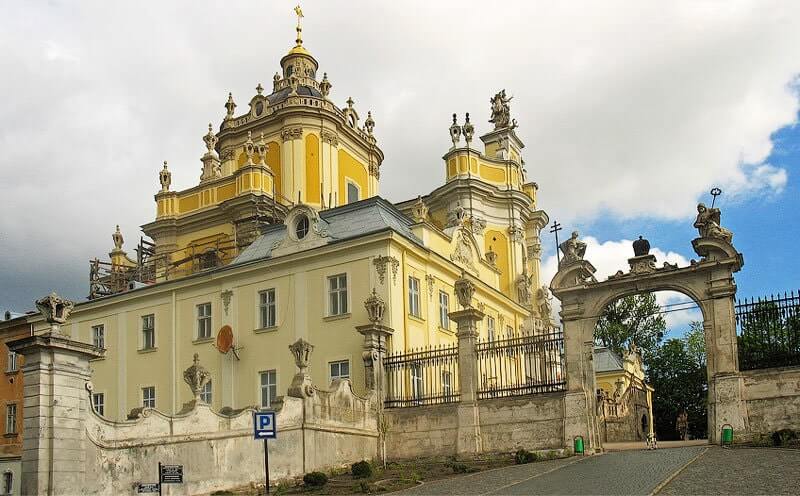 Cathedral of St. Yura is a masterpiece of Ukrainian Baroque, the main Greek Catholic church in Lviv (St. Yura Square, 5), built in 1744-1764. It features an architectural ensemble, which includes the cathedral, the metropolitan’s chambers (1772), the bell tower (1828) and the garden. The bell tower houses the oldest bell in Ukraine, cast in 1341. In 1932-1933 archaeologists who have explored the cathedral’s dungeons have found in the vestibule the remains of the foundations of a 14th-century church. In the underground, there are six niches-sarcophagi with tombstones decorated with the coats of arms of the metropolitans. Since 1990, the Cathedral of St. Yura has been transferred to the Ukrainian Greek Catholic Church. In 1991-1992, during excavations in the crypt, unique church items of the 17th-19th centuries were found, as well as the remains of the Galician prince Yaroslav Osmomysl (1130-1187), hidden here before World War II. In 2001, Pope John Paul II visited the cathedral.
Cathedral of St. Yura is a masterpiece of Ukrainian Baroque, the main Greek Catholic church in Lviv (St. Yura Square, 5), built in 1744-1764. It features an architectural ensemble, which includes the cathedral, the metropolitan’s chambers (1772), the bell tower (1828) and the garden. The bell tower houses the oldest bell in Ukraine, cast in 1341. In 1932-1933 archaeologists who have explored the cathedral’s dungeons have found in the vestibule the remains of the foundations of a 14th-century church. In the underground, there are six niches-sarcophagi with tombstones decorated with the coats of arms of the metropolitans. Since 1990, the Cathedral of St. Yura has been transferred to the Ukrainian Greek Catholic Church. In 1991-1992, during excavations in the crypt, unique church items of the 17th-19th centuries were found, as well as the remains of the Galician prince Yaroslav Osmomysl (1130-1187), hidden here before World War II. In 2001, Pope John Paul II visited the cathedral.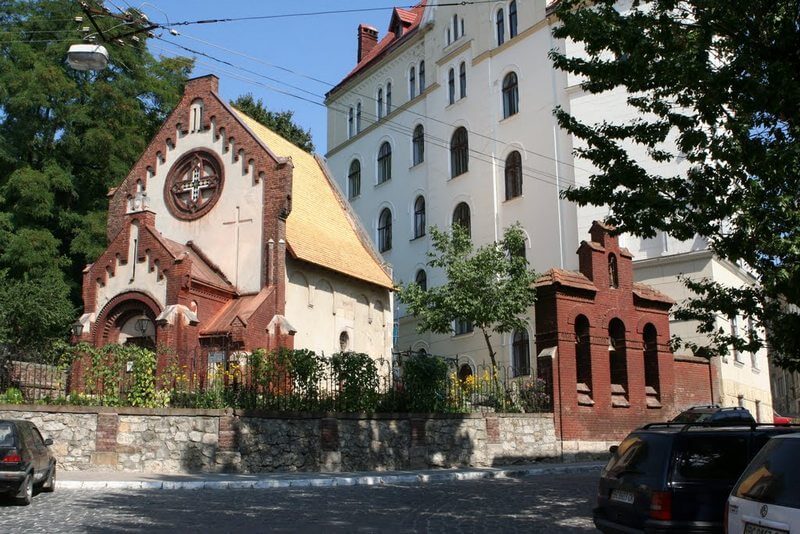 The Church of St. John the Baptist is one of the oldest churches in Lviv, an architectural monument (Staryi Rynok Square, 3) presumably built in the XIV century as one of the churches of the Armenian community, which was located outside the city in the Armenian quarter. In the XVII-XVIII centuries, side chapels were added to it, giving the structure a cruciform shape. In 1886-1889, the church was significantly rebuilt, ornamental painting was made in the interior. After the reconstruction, the temple began to look like a pseudo-Romanesque style chapel of the 19th century. In 1989, a reconstruction was carried out, during which many elements of the Gothic style were discovered, which gave grounds to assert about the Gothic nature of the building. Since 1993, the building houses the Museum of the oldest monuments of Lviv.
The Church of St. John the Baptist is one of the oldest churches in Lviv, an architectural monument (Staryi Rynok Square, 3) presumably built in the XIV century as one of the churches of the Armenian community, which was located outside the city in the Armenian quarter. In the XVII-XVIII centuries, side chapels were added to it, giving the structure a cruciform shape. In 1886-1889, the church was significantly rebuilt, ornamental painting was made in the interior. After the reconstruction, the temple began to look like a pseudo-Romanesque style chapel of the 19th century. In 1989, a reconstruction was carried out, during which many elements of the Gothic style were discovered, which gave grounds to assert about the Gothic nature of the building. Since 1993, the building houses the Museum of the oldest monuments of Lviv. The Assumption Church is an architectural monument of the 16th-17th centuries (Podvalna st., 9). It was built for the Lviv Assumption Brotherhood on the site of the original church (15th century). It features an architectural ensemble, which includes the Church of the Assumption of the Blessed Virgin Mary (1591-1629), the chapel of the Three Saints (1578-1584), as well as the bell tower (1572-1578), built at the expense of the merchant Korniakt and named after him (its height is 65 m). Paintings of the 17th-18th centuries, the iconostasis (1773), icons of the Passionate Cycle remained from the iconostasis of the 17th century, have been preserved in the interior of the church. Particular attention is drawn to the stained-glass windows made by the artist P. Kholodnyi (1920s).
The Assumption Church is an architectural monument of the 16th-17th centuries (Podvalna st., 9). It was built for the Lviv Assumption Brotherhood on the site of the original church (15th century). It features an architectural ensemble, which includes the Church of the Assumption of the Blessed Virgin Mary (1591-1629), the chapel of the Three Saints (1578-1584), as well as the bell tower (1572-1578), built at the expense of the merchant Korniakt and named after him (its height is 65 m). Paintings of the 17th-18th centuries, the iconostasis (1773), icons of the Passionate Cycle remained from the iconostasis of the 17th century, have been preserved in the interior of the church. Particular attention is drawn to the stained-glass windows made by the artist P. Kholodnyi (1920s).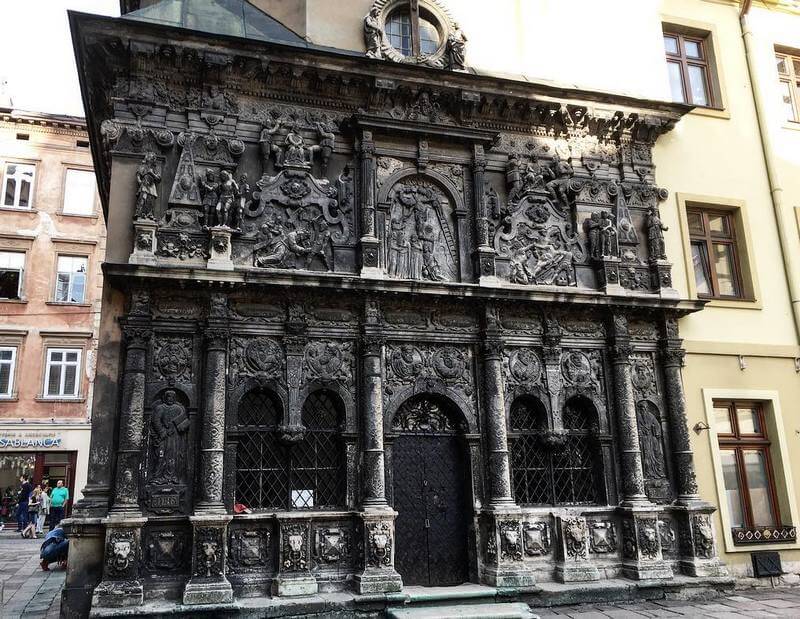 The Boim Chapel is a family crypt of the Boim family of Lviv merchants, a historical monument of architecture of the 17th century (Cathedral Square, 1). Georgy Boim began to build the tomb for the family, and his son Pavel finished it. 14 members of the dynasty were buried in the chapel. In the XVIII century the burials were transferred to the city cemetery. The chapel has a square shape. Its walls are oriented strictly to the cardinal points. The southern wall is closed by a building built in the 19th century. The main western façade is decorated with decorative elements. The interior of the chapel deserves attention. The center of the interior is an altar decorated with sculptural compositions on the theme of the Passion of Christ. The main composition is “Prayer for the Chalice.” The inner bowl of the dome is an important component of the ensemble, completing the integrity of the complex. The altar niches are covered with two doors. Wood carving, forging, painting were used in door decoration. Above the entrance there are portraits of Georgy and Pavel Boims. The chapel is open to the public.
The Boim Chapel is a family crypt of the Boim family of Lviv merchants, a historical monument of architecture of the 17th century (Cathedral Square, 1). Georgy Boim began to build the tomb for the family, and his son Pavel finished it. 14 members of the dynasty were buried in the chapel. In the XVIII century the burials were transferred to the city cemetery. The chapel has a square shape. Its walls are oriented strictly to the cardinal points. The southern wall is closed by a building built in the 19th century. The main western façade is decorated with decorative elements. The interior of the chapel deserves attention. The center of the interior is an altar decorated with sculptural compositions on the theme of the Passion of Christ. The main composition is “Prayer for the Chalice.” The inner bowl of the dome is an important component of the ensemble, completing the integrity of the complex. The altar niches are covered with two doors. Wood carving, forging, painting were used in door decoration. Above the entrance there are portraits of Georgy and Pavel Boims. The chapel is open to the public.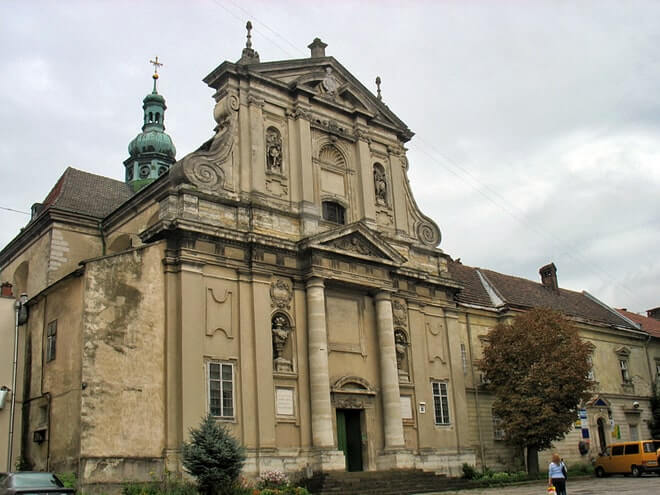 The Bernardine Church is one of the best architectural ensembles of the 17th-18th centuries preserved in Lviv (Soborna Square, 3-a). In 1630, on the site of the Bernardine monastery (15th century), the Church of St. Andrew was built. In the period of the XVII-XVIII centuries, wooden buildings were replaced with stone ones. The monastery was a fortified hub, surrounded by stone walls with loopholes and a tower with a gate, connecting with the defensive fortifications of the city. The fortification system of the monastery, if necessary, could protect the eastern borders of Lviv. Today the eastern wall of the fortifications and the Hlynians’ka tower have been preserved. In the interior of the church, 17 wooden altars, an organ and painting (18th century) have been preserved. On the facade of the temple there are statues of the saints of the Bernardine Order. During restoring in the 1970s the Hlynians’ka tower with the gates blocked in the 17th century, was opened. In 2007, a fresco (17th-18th centuries) was found in the cell building. The cell itself is considered the only known cell with a painting in Ukraine. The dungeons of the monastery is another interesting object. A small part is open for viewers, where the Museum of Ideas is located (Valov St., 18-a). In the evening, the temple is illuminated with multi-colored light.
The Bernardine Church is one of the best architectural ensembles of the 17th-18th centuries preserved in Lviv (Soborna Square, 3-a). In 1630, on the site of the Bernardine monastery (15th century), the Church of St. Andrew was built. In the period of the XVII-XVIII centuries, wooden buildings were replaced with stone ones. The monastery was a fortified hub, surrounded by stone walls with loopholes and a tower with a gate, connecting with the defensive fortifications of the city. The fortification system of the monastery, if necessary, could protect the eastern borders of Lviv. Today the eastern wall of the fortifications and the Hlynians’ka tower have been preserved. In the interior of the church, 17 wooden altars, an organ and painting (18th century) have been preserved. On the facade of the temple there are statues of the saints of the Bernardine Order. During restoring in the 1970s the Hlynians’ka tower with the gates blocked in the 17th century, was opened. In 2007, a fresco (17th-18th centuries) was found in the cell building. The cell itself is considered the only known cell with a painting in Ukraine. The dungeons of the monastery is another interesting object. A small part is open for viewers, where the Museum of Ideas is located (Valov St., 18-a). In the evening, the temple is illuminated with multi-colored light.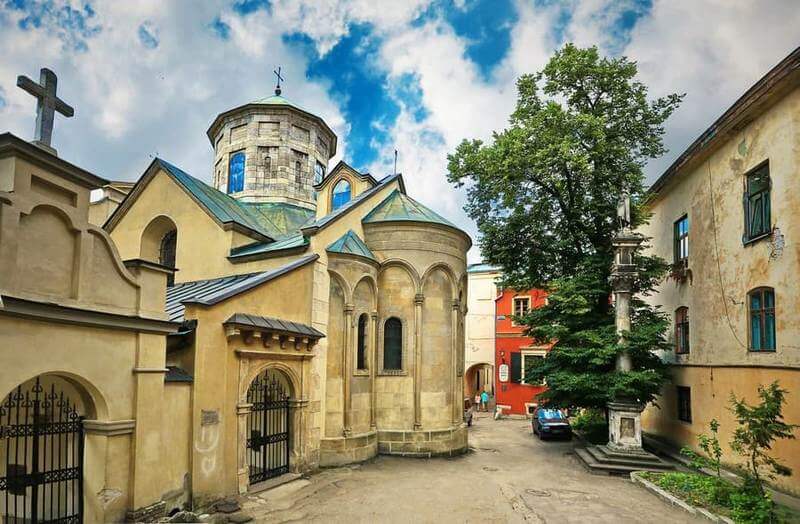 The Armenian Cathedral is one of the most ancient churches in Lviv, an architectural monument (7-13 Armianska St.). Included in the UNESCO World Heritage List. In 1356-1363, on the site of a wooden Armenian church (XII century), the construction of a cathedral started at the expense of Armenian merchants. The architectural ensemble also includes the bell tower (16th century), the archbishop’s palace (18th century), the Armenian bank (17th century), the Benedictine monastery (17th century) and the wooden altar “Golgotha” (18th century). During the restoration of 1908-1929 the interior was decorated with frescoes, wall paintings, stained glass windows and mosaics. Particularly striking are the frescoes of The Burial of St. Odilon, The Last Supper and The Crucifixion by the Polish artist Jan Henryk Rosen. In Soviet times, the premises of the temple were used for storage. The famous scene of D’Artagnan’s duel with his friends from the movie “D’Artagnan and the Three Musketeers” was filmed in the courtyard. Since 2001, divine services have been resumed.
The Armenian Cathedral is one of the most ancient churches in Lviv, an architectural monument (7-13 Armianska St.). Included in the UNESCO World Heritage List. In 1356-1363, on the site of a wooden Armenian church (XII century), the construction of a cathedral started at the expense of Armenian merchants. The architectural ensemble also includes the bell tower (16th century), the archbishop’s palace (18th century), the Armenian bank (17th century), the Benedictine monastery (17th century) and the wooden altar “Golgotha” (18th century). During the restoration of 1908-1929 the interior was decorated with frescoes, wall paintings, stained glass windows and mosaics. Particularly striking are the frescoes of The Burial of St. Odilon, The Last Supper and The Crucifixion by the Polish artist Jan Henryk Rosen. In Soviet times, the premises of the temple were used for storage. The famous scene of D’Artagnan’s duel with his friends from the movie “D’Artagnan and the Three Musketeers” was filmed in the courtyard. Since 2001, divine services have been resumed.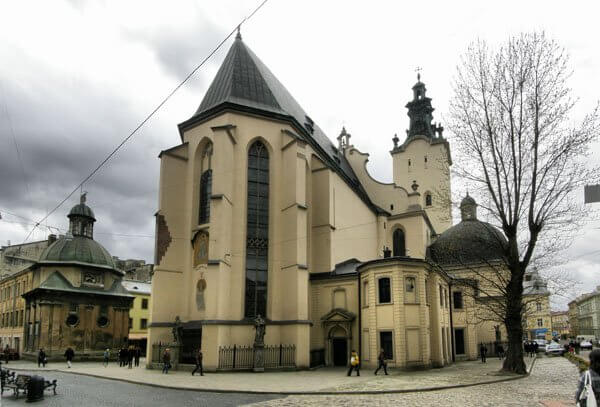 The metropolitan (Latin) Cathedral is an architectural monument of the XIV-XVIII centuries, one of the oldest churches in Lviv (Cathedral Square, 1). One of the two churches in Ukraine, which have been awarded the status of a “small basilica”. The construction of the cathedral began in 1360-1479. In 1760-1778 it was significantly rebuilt, and some chapels were demolished. Only eight chapels of the 16th-18th centuries attached to the cathedral, have survived. In 1772, during the occupation of Lviv by the Austrians, residents of the city walled up the main entrance. To this day, you can go inside only through the side entrance. In Soviet times, the temple was open for visits by believers. In 2001, the cathedral was visited by Pope John Paul II. On the occasion of the visit of the Pope, a memorial plaque was installed on the facade.
The metropolitan (Latin) Cathedral is an architectural monument of the XIV-XVIII centuries, one of the oldest churches in Lviv (Cathedral Square, 1). One of the two churches in Ukraine, which have been awarded the status of a “small basilica”. The construction of the cathedral began in 1360-1479. In 1760-1778 it was significantly rebuilt, and some chapels were demolished. Only eight chapels of the 16th-18th centuries attached to the cathedral, have survived. In 1772, during the occupation of Lviv by the Austrians, residents of the city walled up the main entrance. To this day, you can go inside only through the side entrance. In Soviet times, the temple was open for visits by believers. In 2001, the cathedral was visited by Pope John Paul II. On the occasion of the visit of the Pope, a memorial plaque was installed on the facade.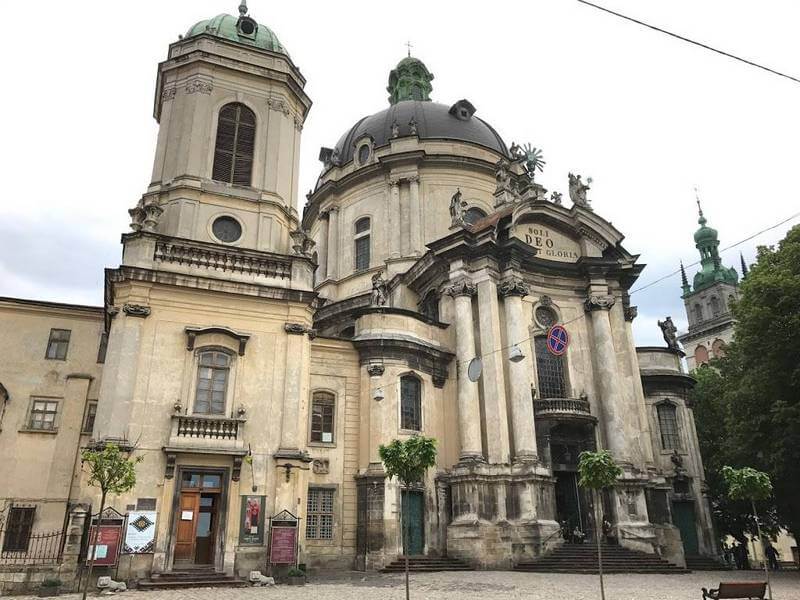 The Dominican Cathedral (monastery) is a cult Baroque style building, an architectural monument of the 18th century (Museum Square, 1). In 1749, at the expense of the Polish hetman Jozef Potocki, the construction of a new church began on the site of the first Dominican monastery, founded in the XIV century. In 1865 a bell tower was added. The stone church with bell towers on the sides depicts an elongated cross with an oval central part. The building of cells adjoins the cathedral. The interior features massive columns, galleries and boxes decorated with wooden statues. Since the 1990s the temple is open to parishioners. The monastery houses the Museum of the History of Religion. Under the building there are dungeons, which are among the oldest in Lviv. Presumably, these are the remains of the palace of Prince Leo, founded in 1270. Excursions are also held in the underground.
The Dominican Cathedral (monastery) is a cult Baroque style building, an architectural monument of the 18th century (Museum Square, 1). In 1749, at the expense of the Polish hetman Jozef Potocki, the construction of a new church began on the site of the first Dominican monastery, founded in the XIV century. In 1865 a bell tower was added. The stone church with bell towers on the sides depicts an elongated cross with an oval central part. The building of cells adjoins the cathedral. The interior features massive columns, galleries and boxes decorated with wooden statues. Since the 1990s the temple is open to parishioners. The monastery houses the Museum of the History of Religion. Under the building there are dungeons, which are among the oldest in Lviv. Presumably, these are the remains of the palace of Prince Leo, founded in 1270. Excursions are also held in the underground.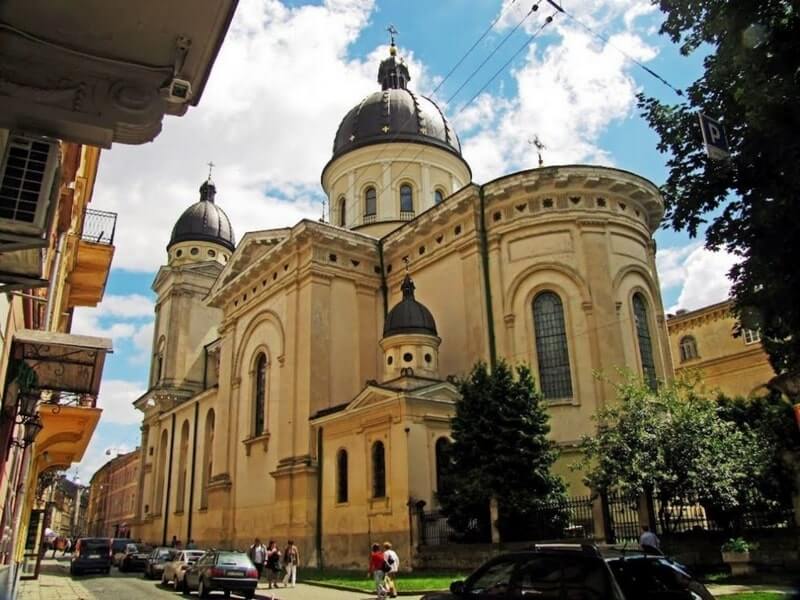 Transfiguration Church, built in 1878-1898, is an architectural monument (21 Krakivska st.). The church was erected on the site of the church of the Trinitarian Order (1703-1731), which burned down in 1848. In 1919, during the Ukrainian-Polish battles, a shell hit the building. In memory of this event, the shell was embedded in the wall, and the inscription “6.1.1919” was made. A famous Ukrainian singer Andrii Kuzmenko was buried in the church on February 5, 2015. It is worth noting that under the Transfiguration Church there are dungeons, with the largest one being in Lviv. Under the altar there is a dungeon dating back to the 19th century.
Transfiguration Church, built in 1878-1898, is an architectural monument (21 Krakivska st.). The church was erected on the site of the church of the Trinitarian Order (1703-1731), which burned down in 1848. In 1919, during the Ukrainian-Polish battles, a shell hit the building. In memory of this event, the shell was embedded in the wall, and the inscription “6.1.1919” was made. A famous Ukrainian singer Andrii Kuzmenko was buried in the church on February 5, 2015. It is worth noting that under the Transfiguration Church there are dungeons, with the largest one being in Lviv. Under the altar there is a dungeon dating back to the 19th century. The Jesuit Church is one of the largest religious buildings in Lviv (Teatralna St., 11). It was built in 1610-1630. Its height is 26 m, capacity – up to 5 thousand parishioners. In the XVIII century. after the liquidation of the Jesuit order, the temple was transformed into a garrison for the military command of the Austrian army. In 1946-2010 it was used as a storage for books. Since 2011, the Garrison Church of St. apostoles Peter and Paul has been opened to worship. The main facade of the building is decorated with Corinthian pilasters, statues of saints and carvings. Inside, there are tombstones, an organ (18th century, not operational), memorial tablets with epitaphs to the Yablonovskys’ princes and a wooden crucifix (17th century). A former Jesuit college adjoins the church, the students of which were B. Khmelnitskyi, J. Vyshnevetskyi and V. Grigorovych-Barskyi. Under the church there are ancient dungeons open to the public.
The Jesuit Church is one of the largest religious buildings in Lviv (Teatralna St., 11). It was built in 1610-1630. Its height is 26 m, capacity – up to 5 thousand parishioners. In the XVIII century. after the liquidation of the Jesuit order, the temple was transformed into a garrison for the military command of the Austrian army. In 1946-2010 it was used as a storage for books. Since 2011, the Garrison Church of St. apostoles Peter and Paul has been opened to worship. The main facade of the building is decorated with Corinthian pilasters, statues of saints and carvings. Inside, there are tombstones, an organ (18th century, not operational), memorial tablets with epitaphs to the Yablonovskys’ princes and a wooden crucifix (17th century). A former Jesuit college adjoins the church, the students of which were B. Khmelnitskyi, J. Vyshnevetskyi and V. Grigorovych-Barskyi. Under the church there are ancient dungeons open to the public.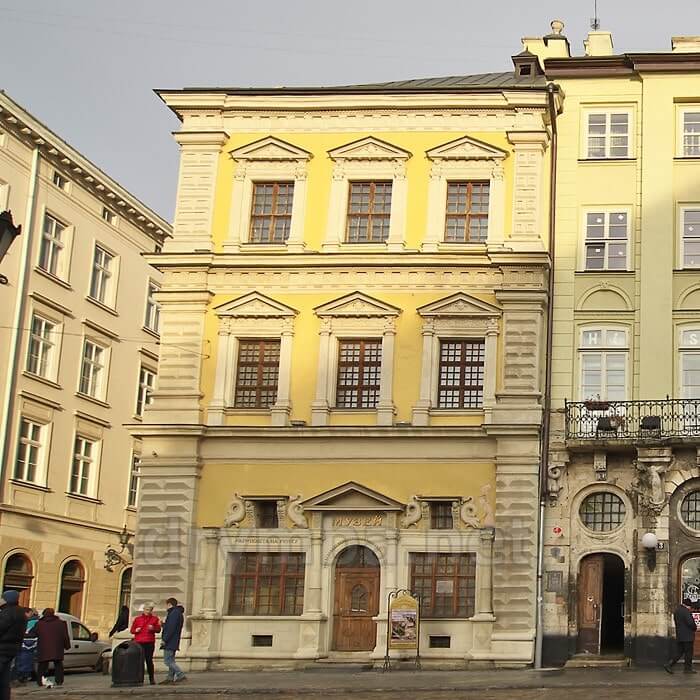 The Bandinelli Palace is an architectural monument of the late 16th century. (Market Square, 2). Since the beginning of the 17th century it belonged to the Italian merchant Bandinelli, who in 1629 opened here the first European post office in Lviv. However, postal services were quite expensive, and soon the city authorities refused them. Having invested a lot of money in this business, the merchant was practically bankrupted. In 1737-1739, the building was substantially rebuilt. The portal and windows, framed by dolphins, remained original, and elements of white stone carving were preserved. In the XIX century, there was a bookstore and a club of the Lviv intelligentsia. At the same time, the famous Polish poet Cornel Weisky lived in the house. In Soviet times, the building belonged to the Lviv Historical Museum. In 2005, after many years of renovation, the palace was reopened with various exhibitions. Thanks to the drawings, the style of the room and the design of the furniture were reproduced inside. Since 2008, the Postal Museum has been located on the ground floor.
The Bandinelli Palace is an architectural monument of the late 16th century. (Market Square, 2). Since the beginning of the 17th century it belonged to the Italian merchant Bandinelli, who in 1629 opened here the first European post office in Lviv. However, postal services were quite expensive, and soon the city authorities refused them. Having invested a lot of money in this business, the merchant was practically bankrupted. In 1737-1739, the building was substantially rebuilt. The portal and windows, framed by dolphins, remained original, and elements of white stone carving were preserved. In the XIX century, there was a bookstore and a club of the Lviv intelligentsia. At the same time, the famous Polish poet Cornel Weisky lived in the house. In Soviet times, the building belonged to the Lviv Historical Museum. In 2005, after many years of renovation, the palace was reopened with various exhibitions. Thanks to the drawings, the style of the room and the design of the furniture were reproduced inside. Since 2008, the Postal Museum has been located on the ground floor.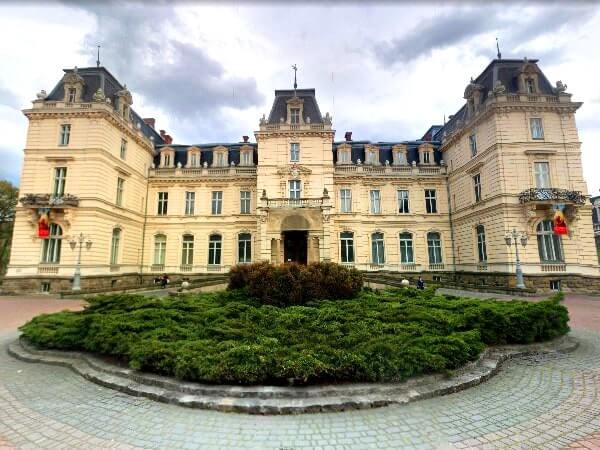 The Potocki Palace is an architectural monument of the 19th century, erected in the style of French classicism (Copernicus st., 15). It is a decoration of Lviv and its hallmark. The project of the residence was developed by order of Count Alfred Józef Potocki, a politician and philanthropist. The construction was completed by Potocki’s son in 1890. At the turn of the 19th-20th centuries, a number of buildings were erected around the mansion (the view of the palace is open from Copernicus Street). 1945-1972 the building housed the Institute of Geology, in 1972 – the city registry office. Since 2007, the second floor has been occupied by the department of the Lviv Art Gallery “European Art of the XIV-XVIII centuries.” The first floor demonstrates the state rooms with the interior. Particularly admirable are the Mirror and the Blue Hall. The Potocki Palace has repeatedly become the site for filming. Since 2010, a Miniature Park has been opened on the territory, where mockups of castles and defensive structures of ancient Ukraine are presented.
The Potocki Palace is an architectural monument of the 19th century, erected in the style of French classicism (Copernicus st., 15). It is a decoration of Lviv and its hallmark. The project of the residence was developed by order of Count Alfred Józef Potocki, a politician and philanthropist. The construction was completed by Potocki’s son in 1890. At the turn of the 19th-20th centuries, a number of buildings were erected around the mansion (the view of the palace is open from Copernicus Street). 1945-1972 the building housed the Institute of Geology, in 1972 – the city registry office. Since 2007, the second floor has been occupied by the department of the Lviv Art Gallery “European Art of the XIV-XVIII centuries.” The first floor demonstrates the state rooms with the interior. Particularly admirable are the Mirror and the Blue Hall. The Potocki Palace has repeatedly become the site for filming. Since 2010, a Miniature Park has been opened on the territory, where mockups of castles and defensive structures of ancient Ukraine are presented.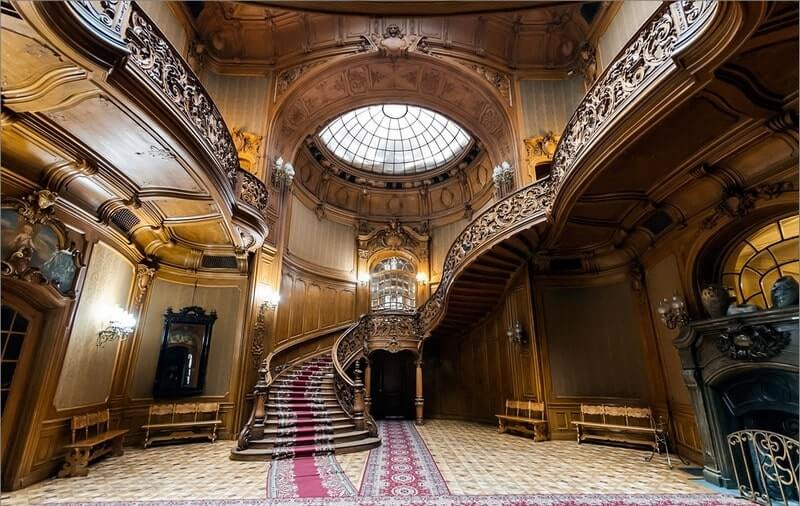 House of Scientists was erected in 1897-1898 based on design by Viennese architects Fellner and Helmer (Listopadovyi Chyn St., 6). Until 1939, the building housed a casino. Since 1948, the Lviv House of Scientists has been located here, which is associated with various events in the scientific, social and creative life of the city. Since 2008 it has been included in the list of cultural heritage monuments. The building strikes not only with its external decoration, but also with its interior. Therefore, it is not surprising that the premises of the house are often used for filming. Thus, the “D’Artagnan and the Three Musketeers” scene where D’Artagnan climbed the stairs to the cardinal, was filmed here.
House of Scientists was erected in 1897-1898 based on design by Viennese architects Fellner and Helmer (Listopadovyi Chyn St., 6). Until 1939, the building housed a casino. Since 1948, the Lviv House of Scientists has been located here, which is associated with various events in the scientific, social and creative life of the city. Since 2008 it has been included in the list of cultural heritage monuments. The building strikes not only with its external decoration, but also with its interior. Therefore, it is not surprising that the premises of the house are often used for filming. Thus, the “D’Artagnan and the Three Musketeers” scene where D’Artagnan climbed the stairs to the cardinal, was filmed here.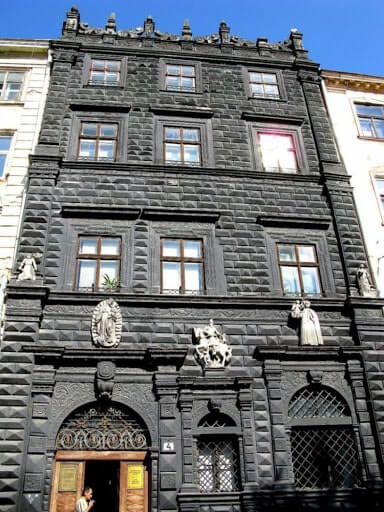 The Black House is a mansion in the center of Lviv, built in 1577 (Market Square, 4). It is also known as the Black stone house or the Anchevskyi’s house. At the end of the XVI century, one of the first city pharmacies was opened here. In the XVII century the house belonged to the family of the doctor Martin Anchevskyi, who decorated the facade of his house with the sculpture of St. Martin. Also, the building is decorated with a sculpture of the patron saint of the city – St. Stanislav. The mansion got its name in the 19th century because of its color. Over the centuries, the lead paint has oxidized and formed a black color. The facade is covered with hewn stone, decorated with ornaments and themed carvings. Today it houses the Lviv Historical Museum. Inside and in the courtyard of the house, a lapidarium of stone monuments has been opened since 2019.
The Black House is a mansion in the center of Lviv, built in 1577 (Market Square, 4). It is also known as the Black stone house or the Anchevskyi’s house. At the end of the XVI century, one of the first city pharmacies was opened here. In the XVII century the house belonged to the family of the doctor Martin Anchevskyi, who decorated the facade of his house with the sculpture of St. Martin. Also, the building is decorated with a sculpture of the patron saint of the city – St. Stanislav. The mansion got its name in the 19th century because of its color. Over the centuries, the lead paint has oxidized and formed a black color. The facade is covered with hewn stone, decorated with ornaments and themed carvings. Today it houses the Lviv Historical Museum. Inside and in the courtyard of the house, a lapidarium of stone monuments has been opened since 2019.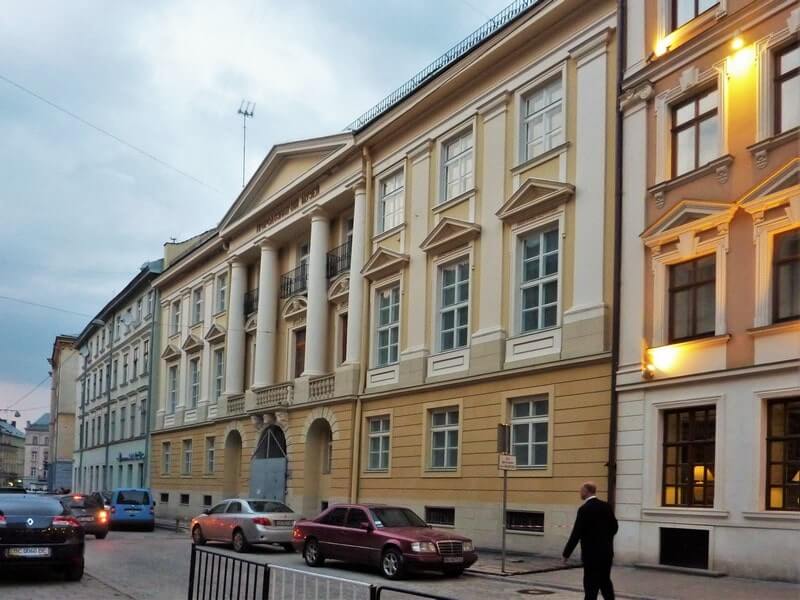 The Dedushytskyi Palace is an architectural monument of the 18th-19th centuries (Teatralna st., 18). The foundation and first floor date back to the late 18th century. In 1793, the site was acquired by the city building inspector – architect Pierre Guibault, who built a house here. The mansion was later sold and changed owners several times. In 1830 it was rebuilt and placed in the building of the magistrate’s office. In 1847 here was a casino. In 1868 the mansion was bought by a scientist and philanthropist – Count V. Dedushytskyi, who opened a museum of natural history in it. In 1890 the count transferred the museum to the city. Today, the premises also house the Natural History Museum of the National Academy of Sciences of Ukraine – one of the largest in Europe. More than 360 thousand exhibits are collected here. Here you will also see a unique old mechanical elevator (19th century).
The Dedushytskyi Palace is an architectural monument of the 18th-19th centuries (Teatralna st., 18). The foundation and first floor date back to the late 18th century. In 1793, the site was acquired by the city building inspector – architect Pierre Guibault, who built a house here. The mansion was later sold and changed owners several times. In 1830 it was rebuilt and placed in the building of the magistrate’s office. In 1847 here was a casino. In 1868 the mansion was bought by a scientist and philanthropist – Count V. Dedushytskyi, who opened a museum of natural history in it. In 1890 the count transferred the museum to the city. Today, the premises also house the Natural History Museum of the National Academy of Sciences of Ukraine – one of the largest in Europe. More than 360 thousand exhibits are collected here. Here you will also see a unique old mechanical elevator (19th century).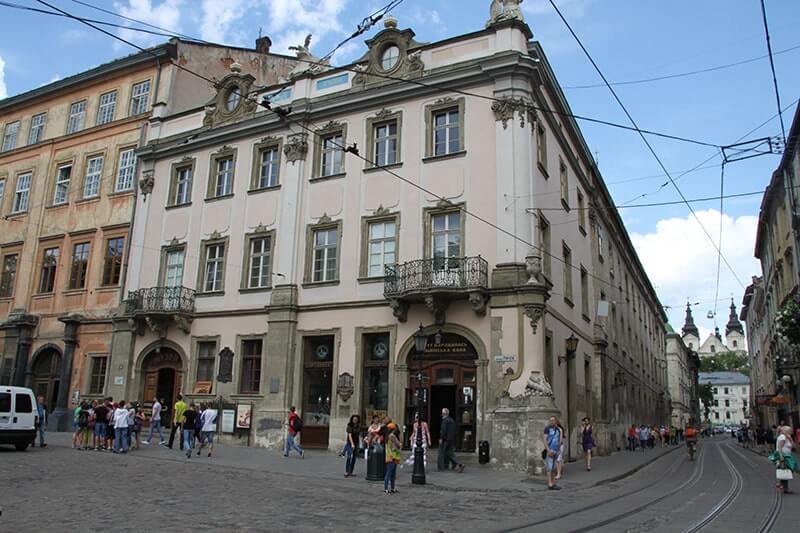 The Lubomyrskyi Palace is an architectural monument of the 18th century (Market Square, 10). It was purchased and rebuilt into the residence in 1760 by order of the governor of the Breslav prince Stanislav Lubomyrskyi. The three-storey brick mansion with a courtyard occupies an entire block and has three facades open to view. The front façade faces the central square and is decorated with elegant stucco moldings. In 1895, the building was bought by the “Prosvita” society, which housed educational institutions (an editorial office of the newspaper “Delo”, a bookstore, an editorial office of the magazine “Civil Voice”). Ivan Franko, Lesia Ukrainka, Ethel Voinych have been here. Since 1975, the funds of the Museum of Ethnography and Arts and Crafts of the National Academy of Sciences of Ukraine have been placed. In 2011, during the restoration, the inscription “House of Education” was revealed on the main facade under a layer of plaster.
The Lubomyrskyi Palace is an architectural monument of the 18th century (Market Square, 10). It was purchased and rebuilt into the residence in 1760 by order of the governor of the Breslav prince Stanislav Lubomyrskyi. The three-storey brick mansion with a courtyard occupies an entire block and has three facades open to view. The front façade faces the central square and is decorated with elegant stucco moldings. In 1895, the building was bought by the “Prosvita” society, which housed educational institutions (an editorial office of the newspaper “Delo”, a bookstore, an editorial office of the magazine “Civil Voice”). Ivan Franko, Lesia Ukrainka, Ethel Voinych have been here. Since 1975, the funds of the Museum of Ethnography and Arts and Crafts of the National Academy of Sciences of Ukraine have been placed. In 2011, during the restoration, the inscription “House of Education” was revealed on the main facade under a layer of plaster.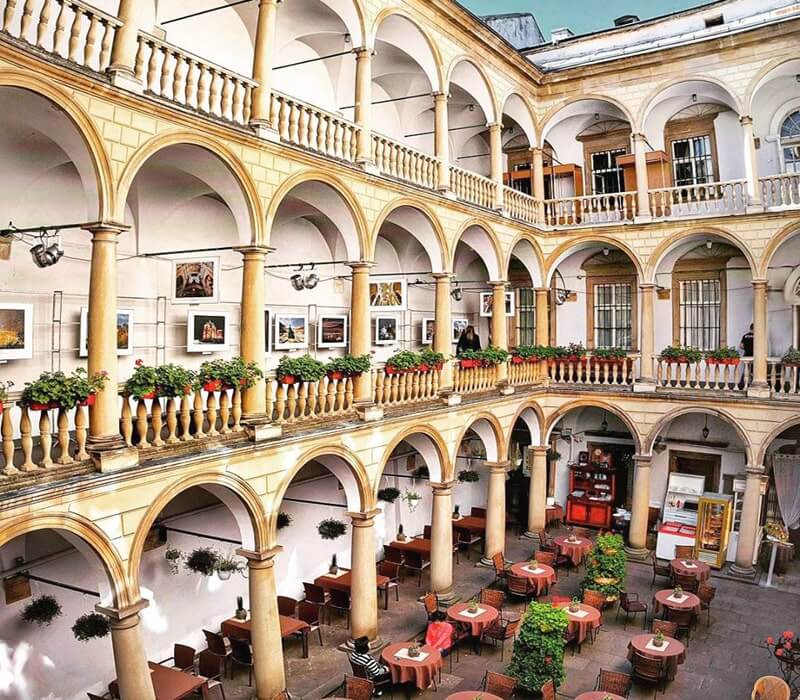 Korniakt’s palace (Italian courtyard) is an architectural monument of the 16th century. (Market Square, 6). Built in 1580 for a merchant of Greek origin Korniakt, who for special merits received permission to build a house with 6 windows on the square, which was considered a great privilege. Since 1647, the mansion belonged to Jan Sobieski. Thus, the palace passed to the family of the Polish king Jan III Sobieski and became known as the Royal Stone. The mansion has changed its owner more than once. In 1908, the building was bought by the city and the Lviv Historical Museum has been located here for over 100 years. The expositions include the so-called “royal halls” furnished in the style of the 18th-19th centuries. Inside, the only Gothic hall in Ukraine in the secular Gothic style of the 15th century has been preserved. The palace is decorated with the courtyard with a three-tiered arcade-loggia. Lviv residents called it the Italian (Venetian) courtyard. During the warm period, a cafe is open here, and concerts of classical music are held.
Korniakt’s palace (Italian courtyard) is an architectural monument of the 16th century. (Market Square, 6). Built in 1580 for a merchant of Greek origin Korniakt, who for special merits received permission to build a house with 6 windows on the square, which was considered a great privilege. Since 1647, the mansion belonged to Jan Sobieski. Thus, the palace passed to the family of the Polish king Jan III Sobieski and became known as the Royal Stone. The mansion has changed its owner more than once. In 1908, the building was bought by the city and the Lviv Historical Museum has been located here for over 100 years. The expositions include the so-called “royal halls” furnished in the style of the 18th-19th centuries. Inside, the only Gothic hall in Ukraine in the secular Gothic style of the 15th century has been preserved. The palace is decorated with the courtyard with a three-tiered arcade-loggia. Lviv residents called it the Italian (Venetian) courtyard. During the warm period, a cafe is open here, and concerts of classical music are held.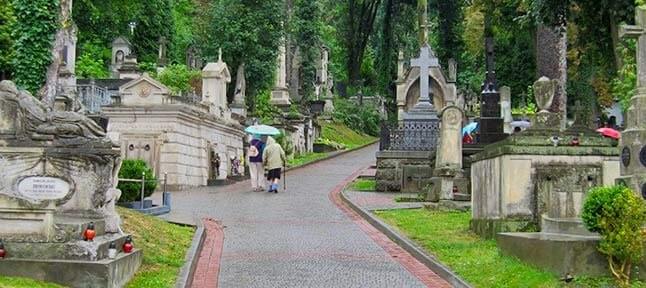 Lychakiv Cemetery is one of the oldest necropolises in Europe, founded in 1786 (33 Mechnykova St.). Today there are up to 400 thousand burials (its area is 42 hectares). Since its opening, mainly the elite and prominent residents of the city have been buried here. The first burials were carried out on the territory in the 17th century, as evidenced by a tombstone dated 1675. Since 1975, the cemetery has been closed for burials. Since 1990, it has been a historical and cultural reserve, which is a museum of tomb sculpture and architecture of famous masters of their time. The oldest surviving gravestones date back to 1787 and 1797. There are also 24 chapels – tombs, one of which is dated 1812. There are a number of war memorials on the territory of the necropolis. Also a pantheon of Polish military and participants in the Ukrainian-Polish war (1918-1919) was created. Such famous personalities, as S. Krushelnytska, M. Shashkevych, I. Franko, G. Tiutiunnyk, V. Ivasiuk and others are buried at the Lychakiv cemetery.
Lychakiv Cemetery is one of the oldest necropolises in Europe, founded in 1786 (33 Mechnykova St.). Today there are up to 400 thousand burials (its area is 42 hectares). Since its opening, mainly the elite and prominent residents of the city have been buried here. The first burials were carried out on the territory in the 17th century, as evidenced by a tombstone dated 1675. Since 1975, the cemetery has been closed for burials. Since 1990, it has been a historical and cultural reserve, which is a museum of tomb sculpture and architecture of famous masters of their time. The oldest surviving gravestones date back to 1787 and 1797. There are also 24 chapels – tombs, one of which is dated 1812. There are a number of war memorials on the territory of the necropolis. Also a pantheon of Polish military and participants in the Ukrainian-Polish war (1918-1919) was created. Such famous personalities, as S. Krushelnytska, M. Shashkevych, I. Franko, G. Tiutiunnyk, V. Ivasiuk and others are buried at the Lychakiv cemetery.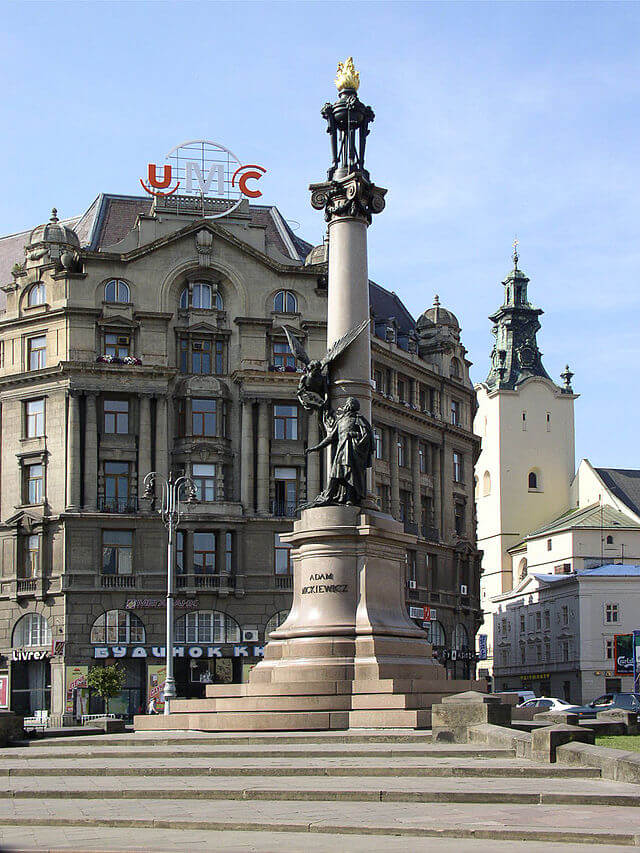 Monument to Mickiewicz was erected in 1904 in memory of the outstanding Polish poet Adam Mickiewicz (Mickiewicz Square). It is considered one of the most beautiful monuments in the world dedicated to the poet (height – 21 m). The establishment of the monument was of great national and cultural importance for the Polish community of Lviv. It features a column on a granite pedestal, the top of which is decorated with a bowl with a flame. At the foot of the column is the figure of the poet, facing the angel with the lyre. An interesting fact is that Mickiewicz had never been to Lviv in his lifetime.
Monument to Mickiewicz was erected in 1904 in memory of the outstanding Polish poet Adam Mickiewicz (Mickiewicz Square). It is considered one of the most beautiful monuments in the world dedicated to the poet (height – 21 m). The establishment of the monument was of great national and cultural importance for the Polish community of Lviv. It features a column on a granite pedestal, the top of which is decorated with a bowl with a flame. At the foot of the column is the figure of the poet, facing the angel with the lyre. An interesting fact is that Mickiewicz had never been to Lviv in his lifetime.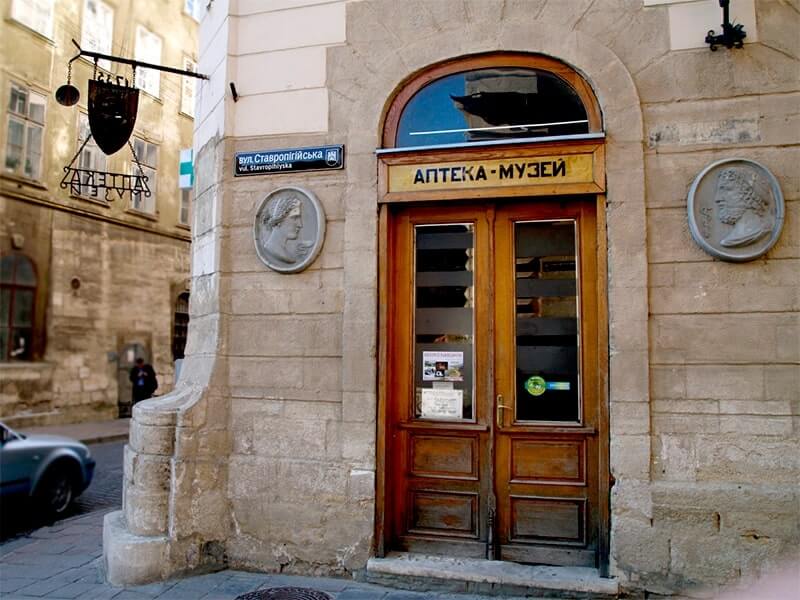 The pharmacy-museum is one of the oldest in Ukraine (Drukarskaya st., 2). It was here that in 1735 the Lviv military pharmacist opened his own pharmacy, which was called “Under the Black Eagle”. The owners changed, but the pharmacy continued to function and is still working. Since 1966, a museum dedicated to the history of the pharmacy and medical practice has been established in the building. Among the exhibits you can see various containers for storing medicines, equipment from different eras, medicines and unique pharmaceutical scales (XVIII century). The exposition continued in the 15th-16th century wing, where an old alchemical laboratory was recreated. In the basements, the interior of the 18th century is displayed. In the courtyard, the look of a bourgeois dwelling (16th-17th centuries) is reconstructed.
The pharmacy-museum is one of the oldest in Ukraine (Drukarskaya st., 2). It was here that in 1735 the Lviv military pharmacist opened his own pharmacy, which was called “Under the Black Eagle”. The owners changed, but the pharmacy continued to function and is still working. Since 1966, a museum dedicated to the history of the pharmacy and medical practice has been established in the building. Among the exhibits you can see various containers for storing medicines, equipment from different eras, medicines and unique pharmaceutical scales (XVIII century). The exposition continued in the 15th-16th century wing, where an old alchemical laboratory was recreated. In the basements, the interior of the 18th century is displayed. In the courtyard, the look of a bourgeois dwelling (16th-17th centuries) is reconstructed.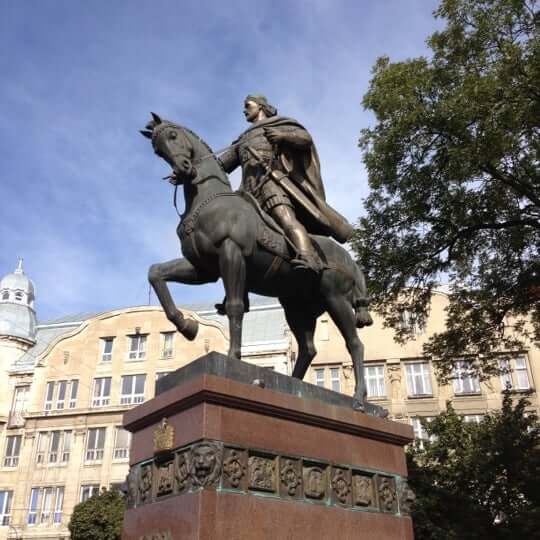 Monument to Danylo Halytskyi was erected in 2001 in honor of the founder of Lviv, Galicia-Volyn prince Danylo Romanovych (Halyts’ka square). The monument features a bronze sculpture on a pedestal with the inscription “King Danylo”. The figure of the prince on horseback turns with the index finger to the descendants. At the corners of the pedestal, the heads of lions look out on four sides.
Monument to Danylo Halytskyi was erected in 2001 in honor of the founder of Lviv, Galicia-Volyn prince Danylo Romanovych (Halyts’ka square). The monument features a bronze sculpture on a pedestal with the inscription “King Danylo”. The figure of the prince on horseback turns with the index finger to the descendants. At the corners of the pedestal, the heads of lions look out on four sides. The Georges Hotel is an architectural monument built in 1899-1901. (sq. Mitskevych, 1). In 1811, the hotel “De Russie” was built on this site, which in 1816 passed into the possession of the merchant Georges Hoffmann, after which the hotel began to be called “Georges”. At the end of the XIX century, by order of the last owner Maria Hoffmann, the old hotel was dismantled and a new one was built. The hotel was equipped with electric lighting from its own power plant, and there was an electric lift. At that time it was considered one of the best in Europe. The interior has preserved stucco molding in the lobby, marble staircases, ceramic fireplaces since 1900. O. Balzac, R. Strauss and many other famous personalities stayed here.
The Georges Hotel is an architectural monument built in 1899-1901. (sq. Mitskevych, 1). In 1811, the hotel “De Russie” was built on this site, which in 1816 passed into the possession of the merchant Georges Hoffmann, after which the hotel began to be called “Georges”. At the end of the XIX century, by order of the last owner Maria Hoffmann, the old hotel was dismantled and a new one was built. The hotel was equipped with electric lighting from its own power plant, and there was an electric lift. At that time it was considered one of the best in Europe. The interior has preserved stucco molding in the lobby, marble staircases, ceramic fireplaces since 1900. O. Balzac, R. Strauss and many other famous personalities stayed here.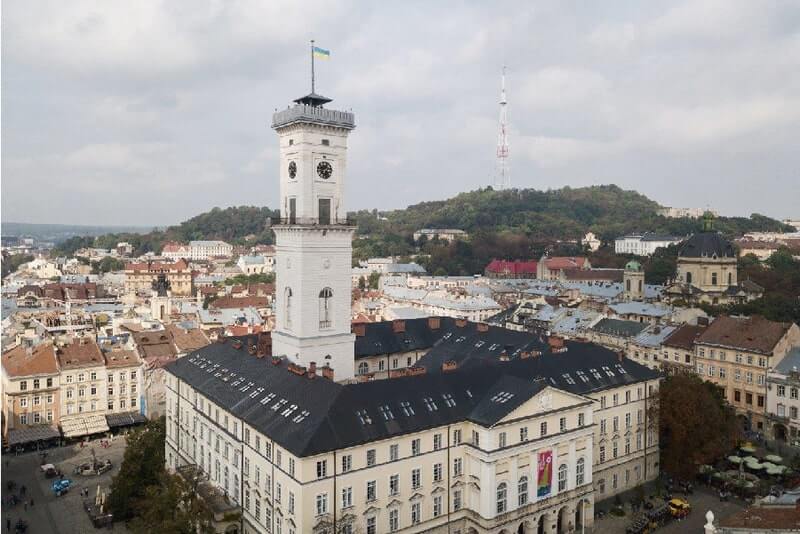 The Town Hall is a building in the very heart of Lviv, built in 1835. It is an architectural monument, included in the UNESCO World Heritage List (Market Square, 1). At all times and to this day, the residence of the Lviv city government is located here. Above the Town Hall there is a clock tower, which is considered to be the highest in Ukraine (height – 65 m). It is noteworthy that the main clock of the city was ordered in Vienna and installed on the tower in 1836. Therefore it served until 1848. In 1851, a new Austrian-made clock was installed, which is still in operation. This is one of the last mechanical tower clocks in Europe. Today, the entrance to the Town Hall is free of charge for tourists. Upstairs there is an observation deck (chargeable), from where a panorama of the city opens. Be prepared to climb 400 steps though.
The Town Hall is a building in the very heart of Lviv, built in 1835. It is an architectural monument, included in the UNESCO World Heritage List (Market Square, 1). At all times and to this day, the residence of the Lviv city government is located here. Above the Town Hall there is a clock tower, which is considered to be the highest in Ukraine (height – 65 m). It is noteworthy that the main clock of the city was ordered in Vienna and installed on the tower in 1836. Therefore it served until 1848. In 1851, a new Austrian-made clock was installed, which is still in operation. This is one of the last mechanical tower clocks in Europe. Today, the entrance to the Town Hall is free of charge for tourists. Upstairs there is an observation deck (chargeable), from where a panorama of the city opens. Be prepared to climb 400 steps though.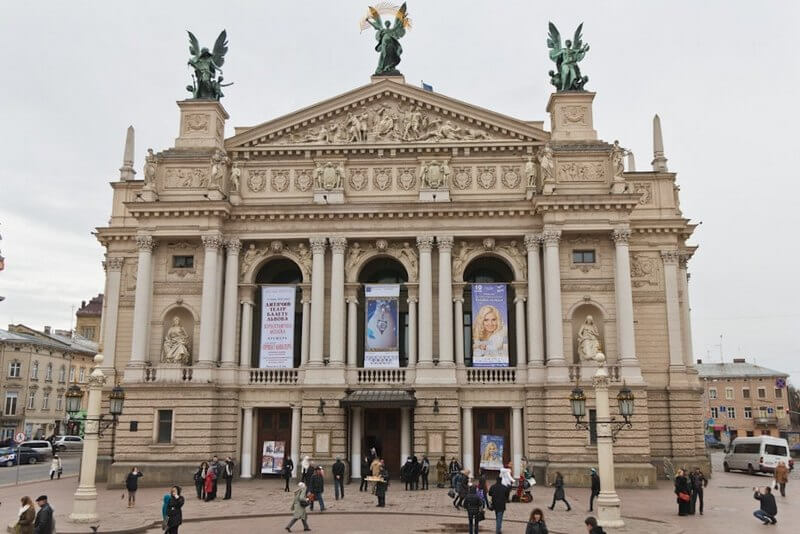 Opera House built in 1897-1900 and designed by Z. Horholevsky (Svobody Ave., 28) is one of the most beautiful buildings and a highlight of Lviv. The uniqueness of the structure lies in the fact that it was built on the site of the river, which was redirected into the collector, and for the first time concrete blocks were used for the foundation. The building is rich in sculptural décor. Marble, stucco ornaments, gilding, and painting prevail in the interior design. You can’t but meet the Mirror Hall, decorated with paintings, candles and mirrors on the walls. The curtain “Parnassus” (1901, G. Semiradsky), which is considered a masterpiece of paintings, has survived to this day. You can get acquainted with the history of the theater and see all its beauty of the decoration by booking a tour.
Opera House built in 1897-1900 and designed by Z. Horholevsky (Svobody Ave., 28) is one of the most beautiful buildings and a highlight of Lviv. The uniqueness of the structure lies in the fact that it was built on the site of the river, which was redirected into the collector, and for the first time concrete blocks were used for the foundation. The building is rich in sculptural décor. Marble, stucco ornaments, gilding, and painting prevail in the interior design. You can’t but meet the Mirror Hall, decorated with paintings, candles and mirrors on the walls. The curtain “Parnassus” (1901, G. Semiradsky), which is considered a masterpiece of paintings, has survived to this day. You can get acquainted with the history of the theater and see all its beauty of the decoration by booking a tour.